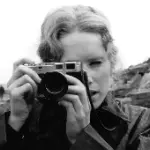Many readers have noted the metaphor of depression in J.K. Rowling's "Harry Potter," particularly in the depiction of Dementors: "The metaphor is not lost on fans, with many deeply relating to the trials and emotions found with their own depression reflected in Dementors." Dementors symbolize a depression that makes you feel cold and numb, sucking all the happiness out of the world.
Similarly, in "Howl's Moving Castle," the curse placed on Sophie by the Witch of the Waste can also be seen as a metaphor for depression. I believe this movie tells the story of Sophie suffering from depression and finding relief, if not complete recovery, with the help of herself and others.
In general, the causes of depression are widely believed to include both biological and psychological factors. Biological factors encompass genetics and physiological disorders such as endocrine imbalances. Psychological factors involve family background (personality formation, childhood experiences) and social influences (poverty, isolation, conflicts between life, society, and culture). Stress is also a potential factor, triggered by major life changes, losses such as divorce, bankruptcy, death of loved ones, or changes in living environment.

Let's look at Sophie's potential causes of depression:
Living alone and isolated family relationships: At the beginning of the movie, it shows that other girls in the shop go on a trip with an elder, and they invite Sophie to join them, but she refuses and stays alone to repair hats. Later, when she meets the Witch of the Waste, she is also alone taking care of the shop. After turning into an old lady, her family comes to visit her, but she sends them away saying she is sick.


Low Self-esteem: Sophie went to visit her sister Betty in the city and they talked about the magician, Howl, who is said to eat girls' hearts. Sophie replied, "It's okay. Howl only targets beautiful girls anyway." After that, she fell silent. Betty responded, "You always say things like that." This shows that Sophie has always been insecure about her appearance and has long-term feelings of inferiority such as "I'm not good-looking," "I can't do it," and "No one will love me."

Social Environment on the Verge of War: The castle of Howl appears for the first time at the beginning of the movie, but then hides in the clouds due to the appearance of fighter planes. Later, we learn that Howl has been fighting against bombing planes. Therefore, this movie is also a metaphorical war film. In such a social environment where war is imminent and residents are living in a state of apocalyptic revelry, it becomes increasingly absurd and alienating.

Next, let's look at Sophie's depression symptoms and related metaphors. Research shows that the symptoms of depression include both mental and physical aspects. We can consider Sophie's aging as a metaphor for her emotional state.
The Black Rubber Man, an underling of the Witch of the Wasteland: a concrete representation of depressive emotions. It first appeared after Howl rescued Sophie from the officer who was harassing her. The Black Rubber Man emerged through the walls, splitting into multiple copies and surrounding Sophie from every narrow alleyway. It was like an episode of depression: "no substance," "spreading rapidly," "omnipresent."

The scene where the Witch of the Wasteland curses Sophie is also worth pondering. Sophie returned home from the extravagant city in the dim light, locked the door, lit a candle, and suddenly heard the doorbell ring. She turned around to see the Witch of the Wasteland breaking in. The Witch said: "Cheap shop, cheap hat, you are cheap enough." Sophie was angered and replied: "This is a small hat shop in a poor urban area." Then, the Witch passed through her in a translucent state (losing substance) and left the room while saying the curse words: "This curse cannot be shared with others."

If we regard the Witch of the Waste as a manifestation of depression, we can interpret the plot like this: Returning to the small hat shop in a poor urban area from the extravagant city, Sophie experiences a significant psychological gap. During the day, she had been saved by a handsome man in the city. Perhaps out of admiration or perhaps out of inferiority, her heart was truly taken away. Howl not only rescued her from the officer but also saved her from a series of negative emotions such as anxiety, panic, and fear caused by getting lost (the Black Rubber Man), taking her to fly in the sky and explore a broader space.
When she returned to her neighbourhood from this “dream,” she felt even more falsehood and pain. At this moment, her suppressed depression erupted. The emotion (Witch of the Waste) penetrated her rational defences (locked door), broke through, and entered the store (her safe space). Negative emotions mocked and blamed her ("cheap"), and she felt wronged, angry, fearful, and unwilling to admit it. At this moment, depression prevailed, turning into a dark grey smoke that enveloped her. From then on, she was forever marked with this curse, unable to confess to or be understood by others. This curse could never be lifted: "I can cast a curse, but I cannot lift it."
Old Sophie: Manifestation of physical symptoms.
After Sophie aged, she went through an incredible struggle all night long. In the morning, she finally accepted the fact and looked at herself in the mirror with deep wrinkles. She said, "Daijōbu yo. Fuku wa mae ni yoroshite iru wa." (It's okay, the clothes also fit better than before.) What is shown here is not only her ability to adapt to imperfections but also the fact that the reality of aging satisfies her previous anxiety about low self-esteem and low self-worth. She finally got the chance to escape from the place that made her feel anxious and out of place.

Howl's Moving Castle: Acceptance, Tolerance, Feeling of Being Needed, Love.
Depression is not a straightforward emotion like unhappiness or sadness with a clear source. Instead, it involves a loss of happiness and meaning in value judgments, leading to persistent mental and physical weakness and a lack of control over life. Physical aging is merely a visible manifestation of this sense of powerlessness and incompetence. The root cause of depression lies in negative cognitive biases in understanding and interpreting the world. In "Howl's Moving Castle," what alleviates Sophie's depression is what the castle offers her: acceptance, a feeling of being needed, and love.
In the castle, Sophie left behind her previous social identities: an uncared-for daughter, a dowdy older sister to a popular younger sibling, a manager of a small rundown hat shop—poor, cheap, overlooked, and unrecognized. In the castle, no one asked who she was or where she came from, allowing her to be herself instead of conforming to external expectations. At the same time, in the dirty and messy castle, she took on the responsibility of doing household chores and cleaning rooms, becoming a valuable person. It was after the first thorough cleaning that the aging spell on her body began to lift, making her slightly younger. After this cleaning, she said, "I'm here because of this place."

I studied for a long time to understand Sophie's ability to become younger. When I first saw the film as a child, I thought it was because of love. Every time she risked everything for Howl or worked hard to fight for something, she would become younger. After watching it many times later, I felt it was because of being loved, giving her the confidence to accept the young and good version of herself. When Howl suggested moving and they ended up returning to her old home, Sophie saw the exact same room as before and probably felt Howl's silent care. In that moment, she became young again. She didn't want to go home; what she wanted to escape wasn't this home. She just wanted to find a place where she belonged.
Another significant moment is when Howl gets angry and cries after his hair is dyed badly. He then sits on a stool, loses consciousness, and the room darkens. A huge shadowy figure emerges from his body, exuding green gelatinous liquid that covers everything, almost drowning out the flames of Calcifer. This is perhaps another form of illness. Without his glamorous appearance, he is probably just a cautious person who reveals his vulnerability and protects himself with all kinds of magical objects, appearing impervious to harm.

Towards the end of the film, with war raging, the Black Rubber Man rampages and tries to break into Howl and Sophie's room. By this point, Sophie possesses something worth protecting and has the power to protect it. "Howl's Moving Castle" can be understood as a story of two individuals suffering from depression who support and save each other.

























































Share your thoughts!
Be the first to start the conversation.